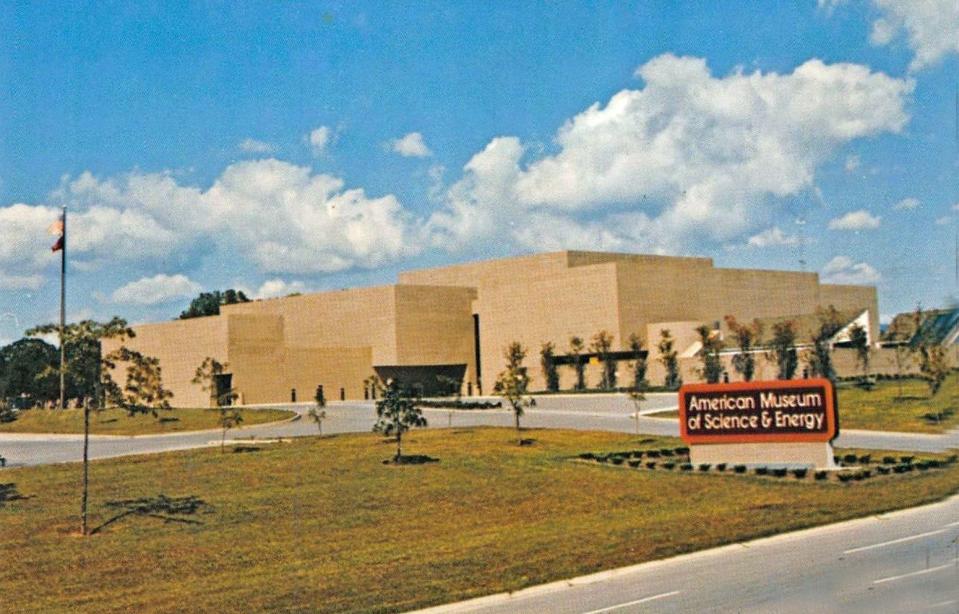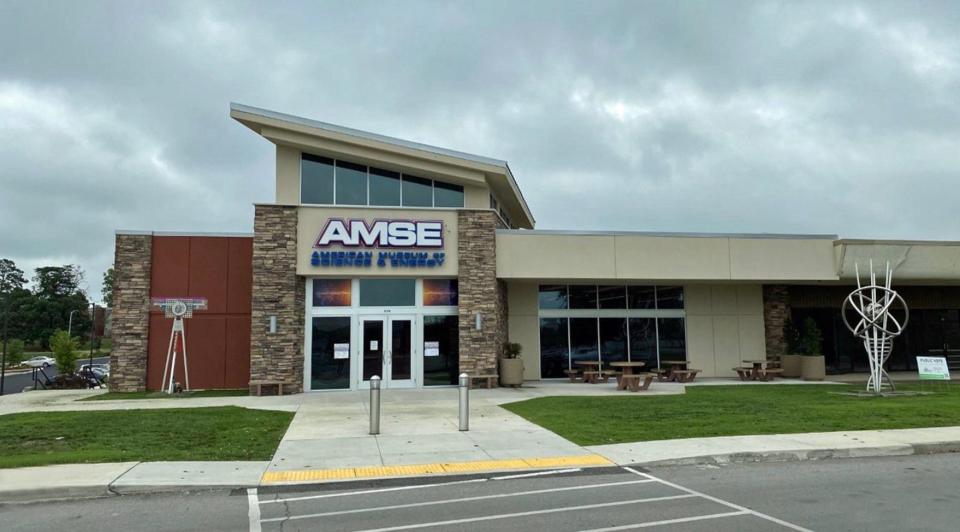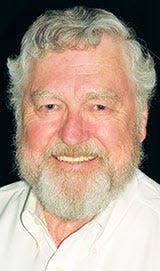Tennessee Legislature met in Oak Ridge in 1975, Part 2
Last week we introduced one of the few times the Tennessee General Assembly of legislators have met outside of Nashville. To bring some 9- plus of them to East Tennessee, especially Oak Ridge, and have them attend a full day and evening of briefings, tours, meals and interaction with scientists and leaders was a phenomenal idea and well executed.
Now, let’s continue with the tours at the Oak Ridge National Laboratory facilities located at Y-12.
Also, at Y-12, in Building 9201-3 (Alpha 3), Gordon Fee showed the legislators some eight test vessels of similar design, though smaller, as reactor vessels. He told them these vessels withstood water pressures nearly three times as great as they were designed to take in a nuclear reactor. Gordon’s presentation in the morning was on nuclear safety. And in the panel discussion he again reinforced the importance of safety comparing the nuclear industry accident potential to that of dams or natural disasters, both of which are far greater.
James Cox, superintendent of ORNL’s Operations Division, gave the legislators a tour of the High Flux Isotope Reactor, where one legislator said, “The basis of fear is ignorance. Now I can go back and say I was there. I looked down at the reactor’s radioactivity. And it did not hurt me.”

The use of HIFR to produce radioactive isotopes for cancer treatment was emphasized.
And at the Oak Ridge Gaseous Diffusion Plant, Ken Sommerfeld, assistant plant manager, inside Building K-33, in 100-degree heat (in February mind you), explained the process whereby gaseous uranium hexafluoride is pumped through thousands of stages of barrier material with small holes to enrich the uranium-235 content. He also showed them on the bus tour the huge containers of uranium worth $320 million. It was destined for Japan. The Toll Enrichment Program sent uranium reactor fuel to many countries over the world. Japan was likely being the largest customer and for which Gene Joyce won a battle to collect state and city sales taxes on the uranium.
The tours accommodated an estimated 150 participants, including the legislators, guests, and the press. They were scheduled so tours at each of the four sites would handle one-fourth of the group in rotation. Security requirements were not as strict as they are today, but this is still a significant accomplishment to have accomplished in three hours.
Murray Rosenthal, in his presentation said, "We must be prepared to expand our production and use of coal in the United States, both burning it directly in power plants and converting it into liquid and gaseous fuels. Tennessee has an important stake in this, since we are a major producer and consumer of coal, and institutions in the state are carrying on important programs aimed at making coal more widely usable.”

He also said, “The new energy sources – shale oil, solar, geothermal, fusion - will not be helping out much for some time. … We are going to need to greatly expand our use of coal and nuclear energy. … We must be careful to conserve and not waste energy.”
Floyd Culler made the point that “Uranium exploration and production must be expanded rapidly in the near-term, and that development of breeder reactors is urgent.” He went on to explain that “A breeder reactor makes more fuel than it consumes. It uses plutonium as a fuel.
“More importantly, it uses uranium-238 that accumulates as the enriching plant tails. By using uranium depleted in uranium-235 as the primary source of plutonium, the estimated uranium resources of the United States can be extended for 1,000 or more years from uranium mined before the breeders were available. The breeder extends by a factor of 60 or 70 the energy than can be obtained from uranium.”
Culler noted the Clinch River Breeder Reactor was proposed to be constructed in Oak Ridge. He also mentioned the fact that it was being questioned as was nuclear energy in general. As you may recall, the Clinch River Breeder Reactor project was terminated on Oct. 26, 1983, when the U.S. Senate voted 56–40 to deny any further financing for the project. I am pleased to note the site is now going to be used for the upcoming Tennessee Valley Authority’s Advanced Nuclear Reactor Technology Park.
Chester Richmond presented a comparison of coal-fired power plants to nuclear-fueled ones. While recognizing that coal would still be needed for the foreseeable future, he emphasized the impact of coal usage on the environment as compared to the less adverse impact of nuclear energy. He introduced the presentation by quoting Buckminister Fuller, inventor of the geodesic dome, who felt more, not less, technology is needed to overcome environmental ills, by saying, “It’s an ignorance crisis we face, not a pollution crisis, or an energy crisis, but, above all, I think nature is really trying to make a success of man despite his ignorance.”
Some of the newspaper articles explored reactions to the day’s presentations and tours. House Speaker Ned McWherter said, “This is the most informative and productive day I’ve ever spent in the General Assembly. We were right to bring the General Assembly to Oak Ridge.”
Other legislators were quoted as saying, “I believe they were truthful about the data they had, but I also believe somewhere there is a whole other group of statistics which prove other points.” And “I heard everything they said, and I still don’t believe it.” Goes to show you that even in 1975, some people had their minds made up and it did not matter what facts they were shown.
Leslie Dale, who along with Ben Adams had lead roles in bringing the event about, said he felt the strongest impression left with the legislators was that nuclear power and nuclear reactors must play a part in providing electric power in the future.
“The critics of nuclear power have minimized it and proposed solar and other more exotic fuels as alternatives," Dale said. “But the legislators realized here that there will need to be dependence on the fullest development of coal and nuclear energy that case was well made.”
Adams said, “Legislators were overwhelmingly impressed with the size of the local installations, the size of its payroll and the credentials of the speakers and leaders. The legislators have developed a new sense of trust in Oak Ridge expertise, one they didn’t even know about.”
Other legislators commented that the critics and environmentalist were not there to present their views and that the presentations were one-sided. Of course, they were correct on both counts. It was by design not to allow other views and also the one side presented was pronuclear - as to be expected from Oak Ridgers.
The final event of the day was a semi-formal reception at the then new location of the American Museum of Atomic Energy (AMSE) on Tulane Avenue. The building was a showplace of which Oak Ridgers were proud. While the official opening of the new museum was scheduled for Feb. 17, 1975, Museum Director Gary English allowed the function to be held there and had most of the exhibits operating. Legislators were encouraged to tour the museum and were awed by the elegance of the food served and the entertaining atmosphere.
Proudly, our AMSE remains something we Oak Ridgers are proud of and it continues to fill the role of a gathering place for parties and receptions, as well as being an excellent museum in conjunction with the other six museums we have now. Can you name them? I know, two of them are not accessible by the public, but are available via the bus tours from AMSE or online.
Let me list them for you: AMSE, the Children’s Museum of Oak Ridge, the Oak Ridge History Museum, the Y-12 History Center, the K-25 History Center, the Graphite Reactor (accessible only via the AMSE Bus Tours) and the Museum of Radiation and Radioactivity (accessible online only, here is the link: https://www.orau.org/health-physics-museum/ ).
Now you see what was accomplished by Oak Ridgers pulling together in February 1975 in a phenomenal manner to execute an influential and highly educational briefing on a subject, nuclear energy, that was at best little understood by the state legislators. One legislator brought along a physicist from Vanderbilt to help him ensure he understood what was being told to him.
A potential lesson learned for modern Oak Ridge is that our expertise is valuable, and we must use the power of factual presentation to influence decision makers who do not have the knowledge or experience to appropriately evaluate some of the important decisions they are called upon to make. We elected them to the office and they are doing their best to fulfill the promises made and expectations of the public. They need help in specialized areas to do their jobs we elected them to do.
It is not always enough to take a group to Nashville or Washington, D.C., and speak to our elected officials. Sometimes bringing them to see the actual sites and meet the people doing the hands-on work is more effective. Folks like Ben Adams, Gene Joyce, Herman Postma, Gordon Fee, Roger Hibbs, Robert “Bob” Hart, Alvin Weinberg, and Al Bissell – they knew and understood.

One last interesting side note to this affair. On Dec. 12, 1974, a bill was introduced in the U.S. House of Representatives to change the name of Oak Ridge National Laboratory to Holifield National Laboratory. It became Public Law 93-616 on Jan. 2, 1975, just one month before the event to bring the legislators to Oak Ridge.
The only place this is mentioned in all the documents I reviewed, and all the newspaper reports I read is at the end of The Associated Press report distributed statewide by Nashville staff member Bill Rawlins, who was at the event. Rawlins said, “And Herman Postma, director of the Holifield National Laboratory, said nuclear critics ‘have resorted to distorting facts.’”
Don’t you know this was a major issue at the time. Nothing in any of the presentations even hinted at anything other than Oak Ridge National Laboratory as the name. Of course, the name was changed back, and I understand that two sets of letterheads were kept at ORNL and used judiciously, limiting the Holifield one to only required communications with the government.
D. Ray Smith is the Oak Ridge historian and longtime "Historically Speaking" columnist for The Oak Ridger.
This article originally appeared on Oakridger: Tennessee Legislature met in Oak Ridge in 1975, Part 2

